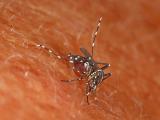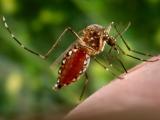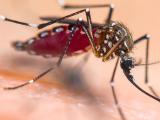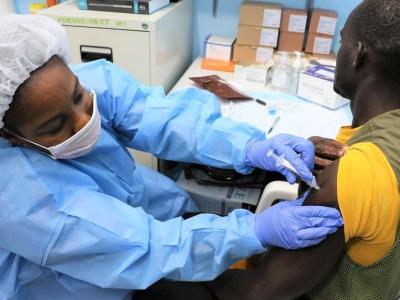Because of concerns about the Zika risk in an area of Texas where dengue outbreaks have occurred before, Texas state health officials urged medical providers to test pregnant women in six counties for the virus if they have symptoms, regardless of travel history.
In other developments, Brazilian researchers who profiled 11 babies with Zika-linked microcephaly found a wide scope of problems, tests on macaques shed more light on how the virus might behave in humans, and Florida reported 6 more locally acquired Zika cases.
Concern area had previous dengue outbreak
The Texas Department of State Health Services (TDSHS) said no local cases have been reported from Texas, but there's a chance Zika could follow in the footsteps of past dengue outbreaks, since both are spread by the same Aedes aegypti mosquitoes. Its alert to providers involves Cameron, Hildago, Starr, Webb, Willacy, and Zapata counties. All are on Texas' southern tip on the border with Mexico, where Zika is already circulating.
Healthcare providers should test pregnant women in the area who have at least two of the four most common Zika symptoms—fever, rash, joint pain, and conjunctivitis—regardless of travel history, the TDSHS said. The number of symptoms to trigger testing is less than the three recommended for the general population, and officials also recommend testing all pregnant women who have traveled to outbreak areas, regardless of symptoms.
John Hellerstedt, MD, TDSHS commissioner, said in the statement that as Zika continues to spread in the Western hemisphere, now is the time to increase surveillance. "Doctors should be looking for Zika in their patients, and everyone should be taking personal precautions to prevent Zika infection."
So far Texas has 218 Zika cases, all linked to travel, including two sexual transmission cases and two babies who were infected before birth.
Research team describes 'congenital Zika syndrome' in babies
Brazilian researchers who followed 11 babies whose congenital Zika virus infections were detected before birth on ultrasound found that microcephaly wasn't the only finding and is likely the result of a constellation of brain injuries. Researchers published their findings yesterday in JAMA Neurology.
The team examined cases detected between October 2015 and February 2016 from Paraiba state, which reported Brazil's second highest microcephaly prevalence and is in the northeast, which has a higher microcephaly rate compared to the rest of the country.
All 11 had brain lesions on fetal ultrasound, and amniocentesis was done to confirm acute Zika infection. Physicians monitored the babies before birth and conducted additional imaging and lab tests after birth. Three of the babies died after birth.
Nine of the babies tested positive for Zika virus before or after birth, while the other two showed evidence of prior infection on serologic testing.
Though brain damage varied among the babies, the most common findings were brain atrophy and changes related to disturbances in neuronal migration. Defects ranged from mild brain atrophy and calcifications to severe malformations including absence of the thalamus and lissencephaly. Other findings included hypoplasia of the cerebellum, cerebellar vermis, and corpus callosum.
One baby had arthrogryposis at only 17 weeks' gestation, which the team said might reflect Zika-related impairment of motor neuron migration.
Most of the mothers were infected during their first trimester of pregnancy, but they noted that the mother of one of the most severely affected babies had Zika symptoms later, at 18 weeks' gestation.
Researchers concluded that amniotic fluid samples are useful for prenatal Zika diagnosis and that virus detection in the placenta and umbilical cord add evidence for vertical transmission during pregnancy. Though there are still many questions about the virus and its role in birth defects, "What seems to be universal is that microcephaly is not the sole finding but is a consequence of several brain injuries," they wrote.
They recommended using the term "congenital Zika syndrome" rather than "microcephaly associated with Zika virus infection" to better reflect a range of neurological and fetal development findings.
Lessons from experimental infections in macaques
Zika virus can quickly spread to the nervous system and can linger in saliva and semen, according to tests on two macaque species designed to shed more light on potential effects on and spread among humans. Investigators who experimentally infected 28 macaques with Thai and Puerto Rican Zika strains published their findings yesterday in Nature Medicine.
As early as 1 day after subcutaneous inoculation Zika virus RNA was found in blood, with virus was also found in saliva, urine, cerebrospinal fluid, semen, and vaginal secretions. Though Zika cleared from blood and urine within 10 days, Zika RNA will still detectable in saliva and semen until the end of the study – 3 weeks after blood tests were negative.
At both early and late stages of infection, the team found evidence of Zika in brain and reproductive system tissues. "The rapid and high-level ZIKV [Zika virus] infection of cerebellar neurons is concerning, and might help explain the neurological outcomes associated with ZIKV infection observed in adults and early gestational neonates," the team wrote.
They said their experiments suggest that the male genital tract and oral mucosa might harbor Zika virus, posing the risk of passing the virus over an extended time period and that higher levels seen in the uteruses of female monkeys than in the vaginal secretions hint that the potential for female-to-male transmission might be lower.
Persistent Zika in saliva raises worries about possible household transmission, investigators said.
In another experiment they reinfected 6 of the animals 45 days after initial infection with the same strain and found all monkeys were protected, suggesting that at least in the short-term, Zika infection affords protective immunity.
Six more Florida cases
The Florida Department of Health today reported six more local Zika cases, two of the people exposed in the Miami Beach transmission area and four in Miami-Dade County residents for whom investigators are still working to determine where they contracted the virus.
The new cases lift the state's number of local cases to 139. Florida also has 16 cases in out-of-state residents who were exposed in the state, and officials are investigating four cases with undeterrmined exposures—some had been in Florida areas where Zika is circulating but had also been to other areas where transmission is occurring.
See also:
Oct 3 TDSHS press release
Oct 3 JAMA Neurology abstract
Oct 3 Nature Med abstract
Oct 4 Florida Health daily Zika update




















